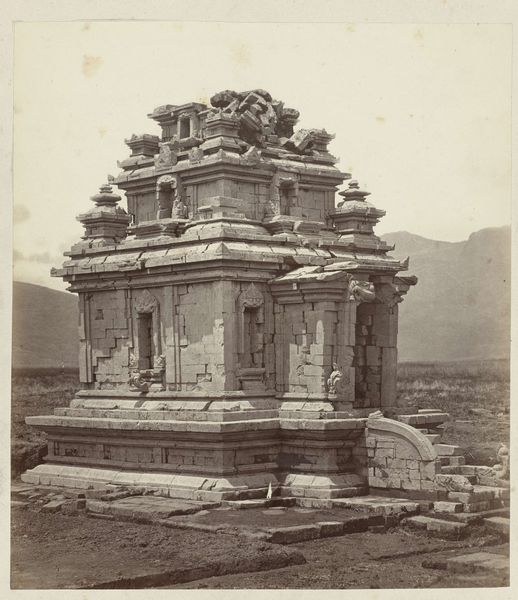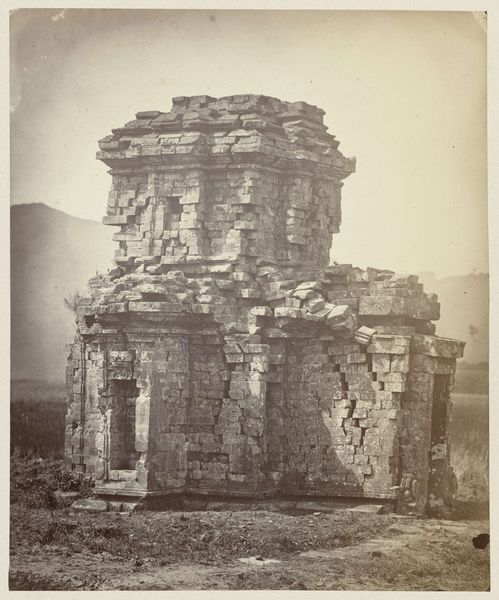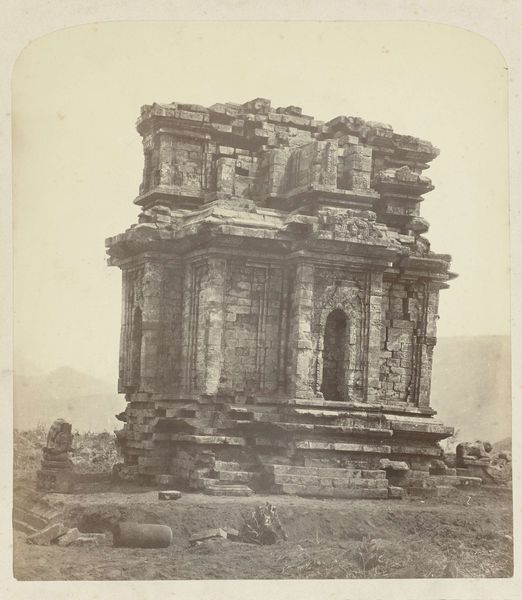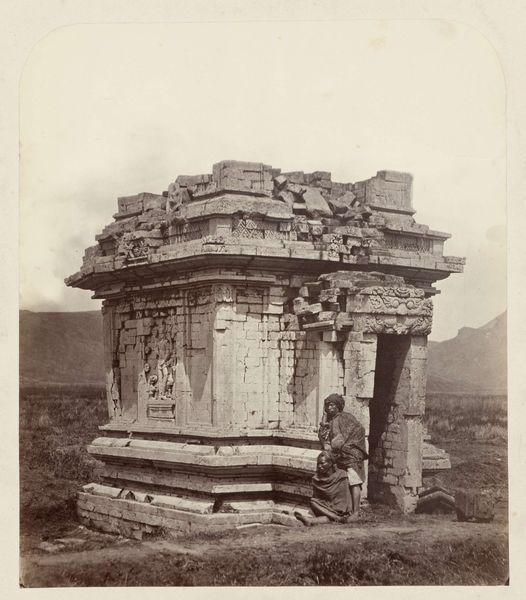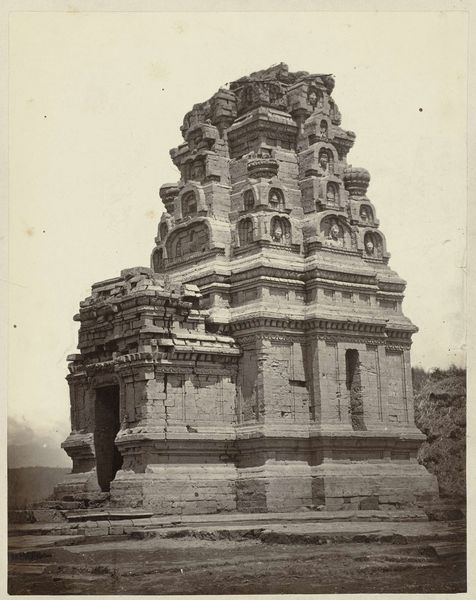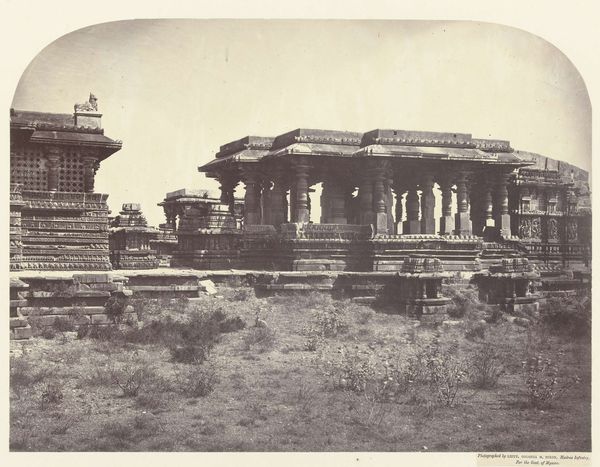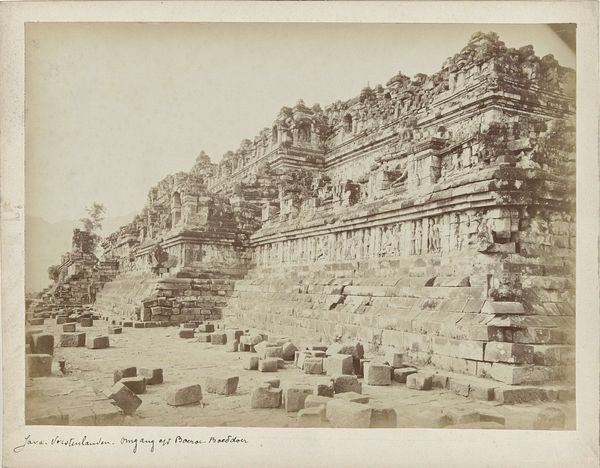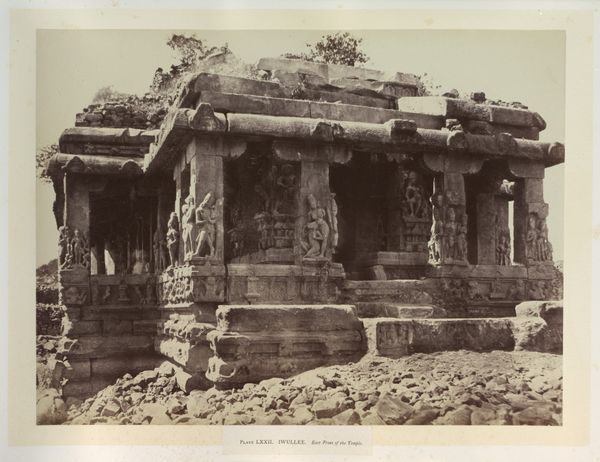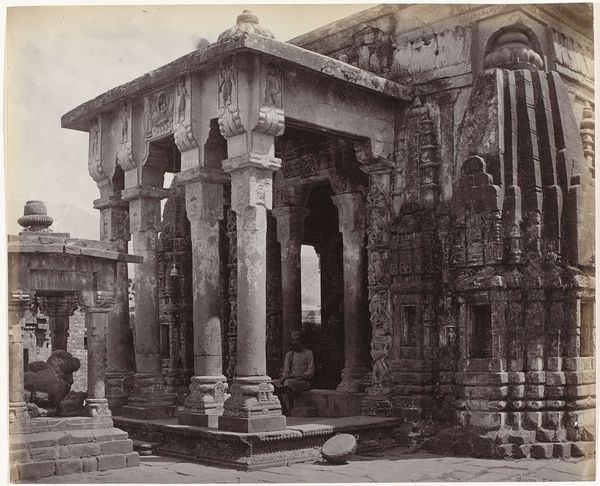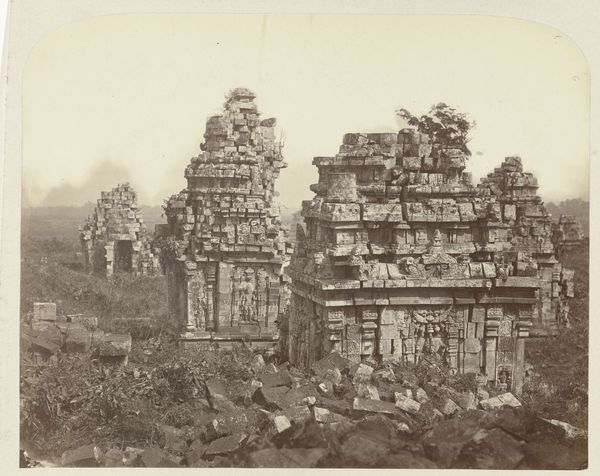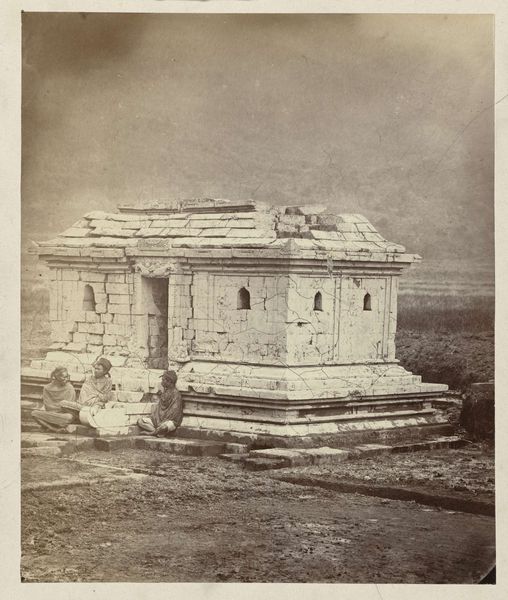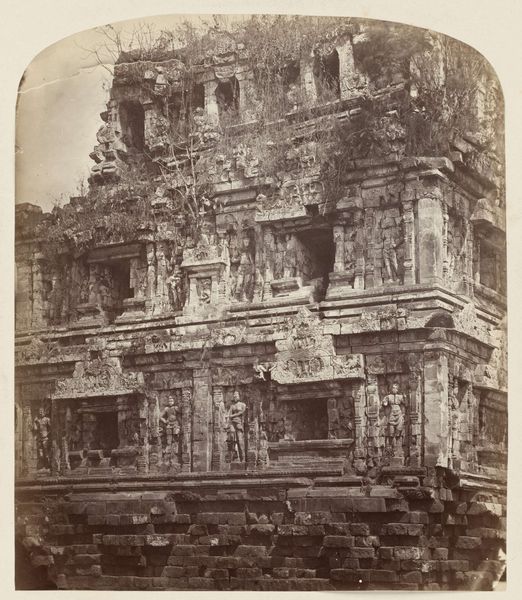
Candi Gatotkaca, general view with staicase projection and entrance (west). Dieng plateau, Wonosobo district, central Java province 8th - 9th century. Possibly 1864 - 1867
0:00
0:00
photography, gelatin-silver-print, architecture
#
asian-art
#
landscape
#
archive photography
#
photography
#
gelatin-silver-print
#
architecture
Dimensions: height 290 mm, width 340 mm
Copyright: Rijks Museum: Open Domain
This albumen silver print by Isidore Kinsbergen captures the Candi Gatotkaca temple in central Java, dating back to the 8th or 9th century. The temple is made of precisely stacked andesite blocks, a locally sourced volcanic stone. This material choice reflects the geological context of the Dieng Plateau, and the island's rich volcanic history. The stone's inherent qualities, its weight and texture, lend the temple a sense of permanence. The visible weathering suggests centuries of exposure to the elements. The construction of this temple undoubtedly required significant labor and expertise. The stones had to be quarried, transported, and meticulously assembled, reflecting the social organization and skilled craftsmanship of the time. Kinsbergen's photograph not only documents this architectural marvel but also provides insight into the labor and cultural practices embedded within its construction. It challenges us to consider the interconnectedness of materials, making, and social context in our understanding of this ancient structure.
Comments
No comments
Be the first to comment and join the conversation on the ultimate creative platform.
